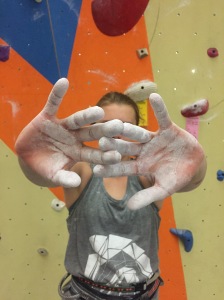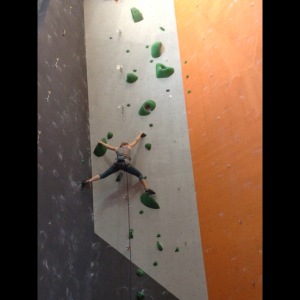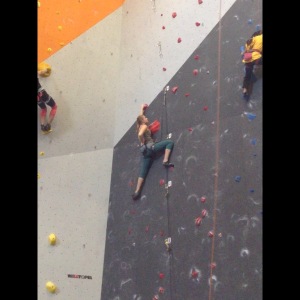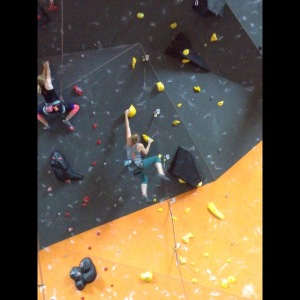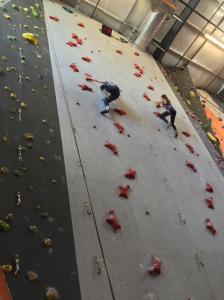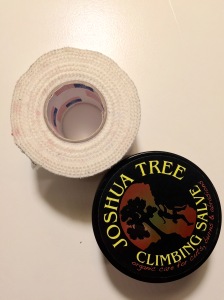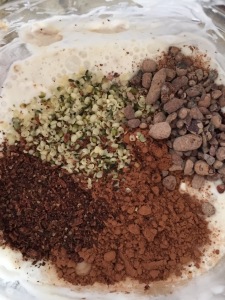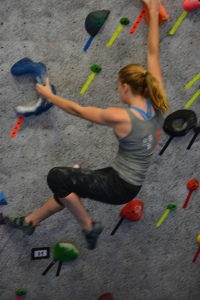Hello, friends!
It’s been forever since I’ve written a blog post, but trust me, I’ve had good reasons.
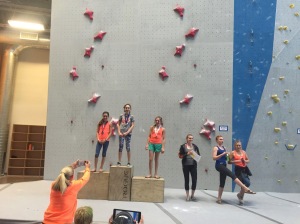

For the past month, I’ve been competing and training like a MADWOMAN. Divisionals, which took place over the weekend of June 12, left me disappointed, irritated, and incredibly motivated. I qualified for Nationals in speed in fourth place, but bad beta and bad mental game kept me out of sport climbing. I was crushed; ropes season is my favorite. But fortunately, my lead season wasn’t over yet; a week later, I boarded a plane to Kennesaw, Georgia, for a two-week-long pre-Nationals training camp run by the well-renowned Scot Jenerik. For two weeks, Scot worked to transform the mental game of me and twenty more of the nation’s strongest youth rock climbers. We would wake up early every morning, go for a run, return to the hotel, do three sets of twenty-five burpees with push-ups, rest for a couple of hours, and then go to the gym for sessions anywhere between two and eight hours long. Somehow, we found time to fill out mental training packets, play hundreds of rounds of Jungle Speed (aka the world’s most violent card game), and eat eight bags of banana chips (or maybe that one was just me).
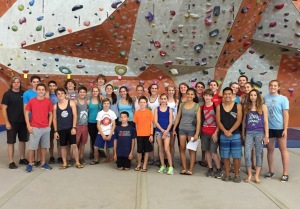
Nationals camp was two weeks of the hardest training I’ve ever done, as well as the most fun. It was worth every second, from screaming my way up 5.12s to panting through the fifteen-meter speed route three times in a row.
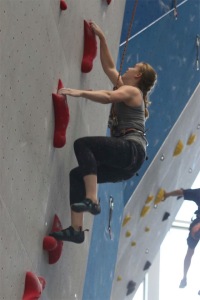
Of course, in all of that training, I lost track of time, and before I knew it, I was tied into the speed wall again, but this time in front of an enormous crowd and four judges with fancy clipboards and timers at Nationals. I landed two solid times–a 17.04 and a 16.47, the latter being my current personal record. Unfortunately, neither time was good enough to win me a place in the sixteen climbers who moved on to semifinals, but that wasn’t what mattered. I’d tried, I’d gone fast, and most of all, I’d learned. I ended the competition in 20th place.
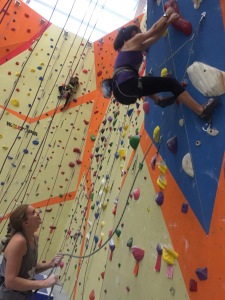
Training camp completely revolutionized the way I saw climbing. I spend equal amounts of time on speed and sport, and although I was going to be competing in speed, I definitely learned the most from sport climbing on those tall, tall walls. I learned how to not let my head get the best of me. I learned that there’s nothing to be afraid of on those walls. I learned that every move is a new challenge, and I learned that to be successful, you had to be willing to take on challenge after challenge until you reached the top. But the thing that stuck with me the most was something Scot had said, right before we started training on the fifth day. He told us that he wanted us to choose a very difficult route, get pumped on it, and then reach the point where we thought we would fall because it was so difficult. Then he told us to play a game, and that game would be to answer this question–how many more moves can you make after you think you’ve reached your breaking point? Reach your mental breaking point, he said, and then count the moves between that and your physical breaking point.
For me, the answer to that question was a turning point. I chose a hard 5.12, full of slopers and on slab. My least favorite style. I got pumped. I wanted to give up. And then I started counting.
One move and I thought I was going to fall. One clip and I was slipping off my hold. I hauled myself back onto it. One more move, big and shoulder-y. A scream, because I had to remind myself to breathe. More moves. Pushing harder. I was slipping off of every hold, but before I fell, I would desperately grab for the next one.
Counting matching, clipping, and hand-switching, I made it seventeen more moves before I fell. Seventeen moves was the difference between when my mind had wanted to give up and when my body had given out. Seventeen moves that I’d finished when I didn’t think I was physically capable of moving another inch. I came off of that route more tired than I have ever been in my climbing career, no exaggeration. And it was the most amazing feeling I’d ever had.
The way I thought about climbing changed in that one moment. My confidence in my ability to push through pain has skyrocketed. My previous definition of pain, of being pumped, of being tired, was shattered. I could look back on the times I’d let go because my mind said it was too much for me, and know that I would never make the same mistake or have the same regret again.
So, quote of the day? That’s easy.
“I may not be the fastest, and I may not be the strongest, but I’ll be damned if I’m not trying the hardest.”
-Unknown
Stay safe!
Julia
